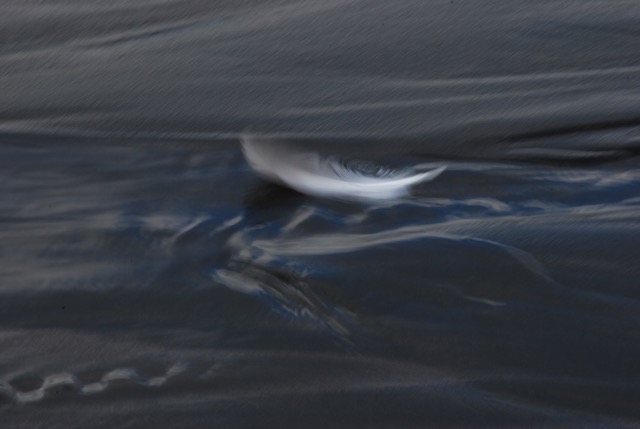
Photo by Bev Rennie
Editorial: Art at the Intersection of the Worlds
“For material civilization is like unto a beautiful body, and spiritual civilization is like unto the spirit of life. If that wondrous spirit of life enters this beautiful body, the body will become a channel for the distribution and development of the perfections of humanity.”
‘Abdu’l-Bahá, The Promulgation of Universal Peace, p. 11
While preparing the current issue of e*lix*ir for publication, I found myself reflecting on a talk given by ‘Abdu’l-Bahá on 14 April 1912 at the Church of the Ascension in Greenwich Village, New York. In the talk, He describes material civilization as a “beautiful body” waiting to be infused with “the spirit of life.”
As I pondered the metaphor, it struck me that it is at this very point of intersection between the material and spiritual worlds that art is born. Artistic expression takes a wide variety of physical forms, but it is always the inner world of imagination, the world of the spirit, that infuses these forms with life.
In another of the His talks,‘Abdu’l-Bahá speaks of “outer sight” and “inner vision.” How true it is that in creating work that embodies both beauty and truth, we, as artists, must employ not only our physical sight but other, more intuitive means of perception.
Through the experience of creating art, the artist becomes acquainted with that invisible plane of existence that is just as real and necessary to our survival as the earth on which we plant our feet. At times of great happiness, art offers us a cup into which to pour our joy; and in times of sorrow, it offers us a lamp to light our way through the darkness. I am not talking here about salvation, redemption, or good versus evil. It is not a moral universe we inhabit when we create art, but rather a spiritual realm that, like a mirror, reflects who we are, what we have become. We perfect our art by perfecting ourselves.
In the work that appears in this issue of e*lix*ir, I find a glorious commonality, not so much in form as in intention — in spirit. All the artists whose work appears in this issue seek forms of exaltation in which to embody what they have perceived through means that include but finally transcend the five senses.
Painter Jean Reece Wilkey skillfully and often humorously juxtaposes manmade objects with the natural world to draw attention to the creative dialectic between the material and spiritual worlds in her seeing and art making.
In the photographs of Bev Rennie, we discover that the infinitesimally small detail is not just a part of the creation: it is the creation. The part is the whole. The dew drop is the leaf. The feather is the water. How could we not have seen a very small frog taking refuge in an alcove between two leaves? A small temple. So many small temples....
In her memoir about witnessing the transformation of illiterate and unskilled Indian village girls into highly functioning leaders of their communities, Holiday Reinhorn conjures an exhilarating journey in which material and spiritual progress are inextricably intertwined: learning to build an oven or a latrine is as important as learning to pray or developing the confidence to set down one’s thoughts in a journal.
And the poets in this issue — Michael Fitzgerald, YoungIn Doe, and Arlette George — also create at that dynamic intersection between the worlds. All seek to infuse the lamp of the poem, its form, with the light of spirit: insight and wisdom.
In his essay “Notes on the Poetic Process,” veteran poet Michael Fitzgerald draws on his many years of poetic practice to offer some pointers about craft. Invoking T.S. Eliot’s notion of the objective correlative, he explains that the spiritual dimension of the poem is invested with artistic integrity when it is grounded in the image and the line.
It is with excitement that we present our first works in translation: the poems of YoungIn Doe in Korean and English. We hope that poems in different languages will become a regular feature in e*lix*ir.
In her novel, The Munich Girl, Phyllis Edgerly Ring infuses the tragedy of World War II with a breath of spirit as she uncovers the secret of a friendship that neither politics nor ideology could destroy.
In my own essay on Stanley Kunitz, I explore the poetics of joy, examining how a poet can celebrate beauty, while remaining connected to truth. In their forms — what music! — their tone, and their themes, Kunitz’s poems embody joy precisely because of their willingness to embrace the contradictions of human life.
Finally, in this issue, we add something new: “Looking Back on Books.” In this section, we present some titles by Bahá’í authors that were well received in the past. By doing so, we intend to create a record of literary work already published by Bahá’í authors and also to issue an invitation to readers: reviewers thought highly of these books, so take a look.
—S.L.H.